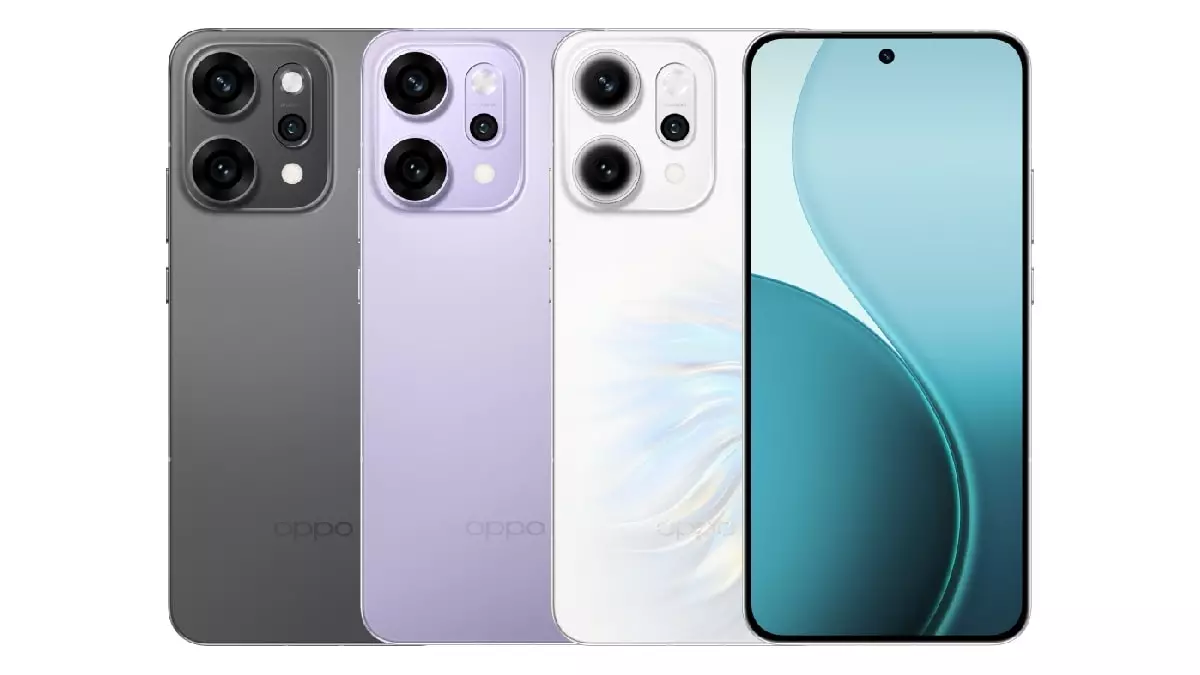Oppo’s latest Reno 14 5G lineup arrives in India amidst a swirl of excitement that, frankly, borders on unwarranted optimism. The company has meticulously teased its specifications, painting a picture of innovation and class-leading features. However, a critical eye reveals that much of this gloss is superficial. The hype surrounding a 50-megapixel triple camera setup, AI-driven features, and high-refresh-rate screens seems to elevate expectations beyond what these devices can practically deliver.
In reality, the camera specifications, while impressive on paper, are likely to yield modest improvements over previous models. The reliance on Sony sensors and optical image stabilization (OIS) is standard fare by now, not cutting-edge. Much the same can be said of the AI features—labeling them as “cutting-edge” obfuscates the fact that AI in smartphones has become a gimmick rather than a game-changer, often offering little more than superficial beautification or minor image enhancements. It’s convenient to tout AI as a differentiator when, in fact, its real-world impact remains limited, especially compared to genuine hardware innovation.
Design and Build Quality: Style Over Substance
Oppo has always leaned heavily into sleek designs and premium materials to justify their premium price tags. The Reno 14 series continues this trend with purported “Crystal Shield Glass” protection, but such marketing buzzwords rarely translate into meaningful durability or scratch resistance. The aesthetic emphasis, with its bright displays and slim profiles, conceals a simple reality: durability and longevity often suffer when devices prioritize style. The larger screens, especially on the Pro variant, may make the phones more fragile, risking the user’s investment in the long run.
These choices underscore a broader problematic trend: consumer obsession with the exterior overshadowing genuine utility or longevity. The high-resolution OLED screens, with their 120Hz refresh rates and 1.5K resolution, undoubtedly make visual experiences more immersive. Yet, these are features that, while appealing, have become industry standards rather than points of distinction. The true test of quality lies in how these devices perform over time, not how shiny or expensive they look straight out of the box.
Performance and Software: More Štuff, Less Substance
Powered by MediaTek Dimensity chips—an affordable alternative to Snapdragon—the Reno 14 series doesn’t push boundaries. While the inclusion of up to 16GB of RAM and large UFS 3.1 storage options appears impressive, it’s more an indication of “more is better” than meaningful performance gains. Real-world performance on these processors can be surprisingly inconsistent, especially with heavy multitasking or gaming, which are often the benchmarks to test genuine usability.
Furthermore, while Oppo touts the latest ColorOS based on Android 15, the software experience continues to be a double-edged sword. Custom skins tend to slow devices, introduce bloatware, and complicate updates—undermining the intended sleekness of the hardware. The AI features touted by Oppo, like AI Recompose and Voice Enhancer, are more marketing gloss than genuine utility. They may work in specific scenarios but rarely justify the premium price, especially when comparable apps on other Android devices deliver similar or better results without the artificial marketing halo.
The Paradox of Battery and Charging
Battery capacity—6,000mAh for the Reno 14 and 6,200mAh for the Pro—is decent, but not revolutionary. The real story lies in charging speed and efficiency. Oppo’s “50W AIRVOOC wireless fast charging” sounds impressive but often falls short of expectations in real-world use. Wireless fast charging is still more of a luxury than a necessity, and the reliance on proprietary fast-charging standards limits user flexibility. Moreover, larger batteries do little to offset the incremental improvements in hardware and AI features that further drain power over time, ultimately questioning whether these devices will sustain a full day under heavy use.
The expectation of longevity hinges on the integration of all these components working harmoniously—something that remains to be seen during real-world testing. Oppo’s hype attempts to mask the shortcomings of mediocre hardware choices, suggesting that bigger batteries and faster charging are the main solutions for device endurance. Reality, however, indicates that smarter energy management and hardware optimization are what truly determine long-term performance.
The Bottom Line: A Vanity Project with Mediocre Values
Oppo’s Reno 14 series embodies the classic modern smartphone blueprint—glossy, feature-rich, and ostensibly innovative. But beneath the shiny surface lies a device that, in reality, offers incremental upgrades rather than revolutionary advances. It is a reflection of the broader smartphone industry’s obsession with chasing specifications and marketing buzzwords, often at the expense of genuine user-centric innovation.
Rather than unleashing the potential of truly transformative technology, Oppo’s focus seems to lie in creating a device that catches the eye and appeals to aspirational consumers. This superficial appeal might suffice for casual users or trend followers, but for anyone seeking meaningful value—be it durability, performance, or longevity—this series raises more questions than answers. It’s a reminder that hype can deceive, but substance remains the cornerstone of truly meaningful technological progress.


Leave a Reply